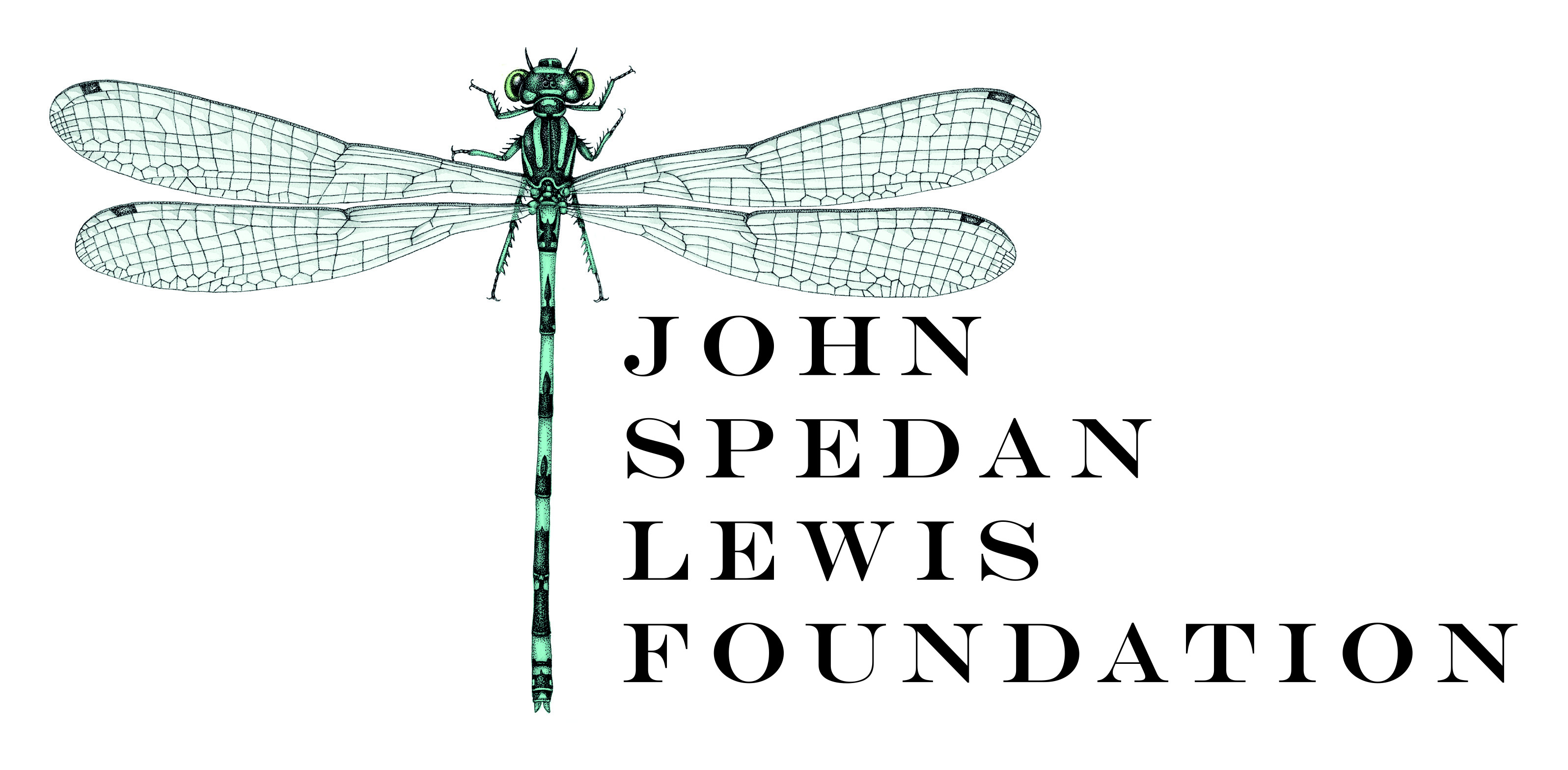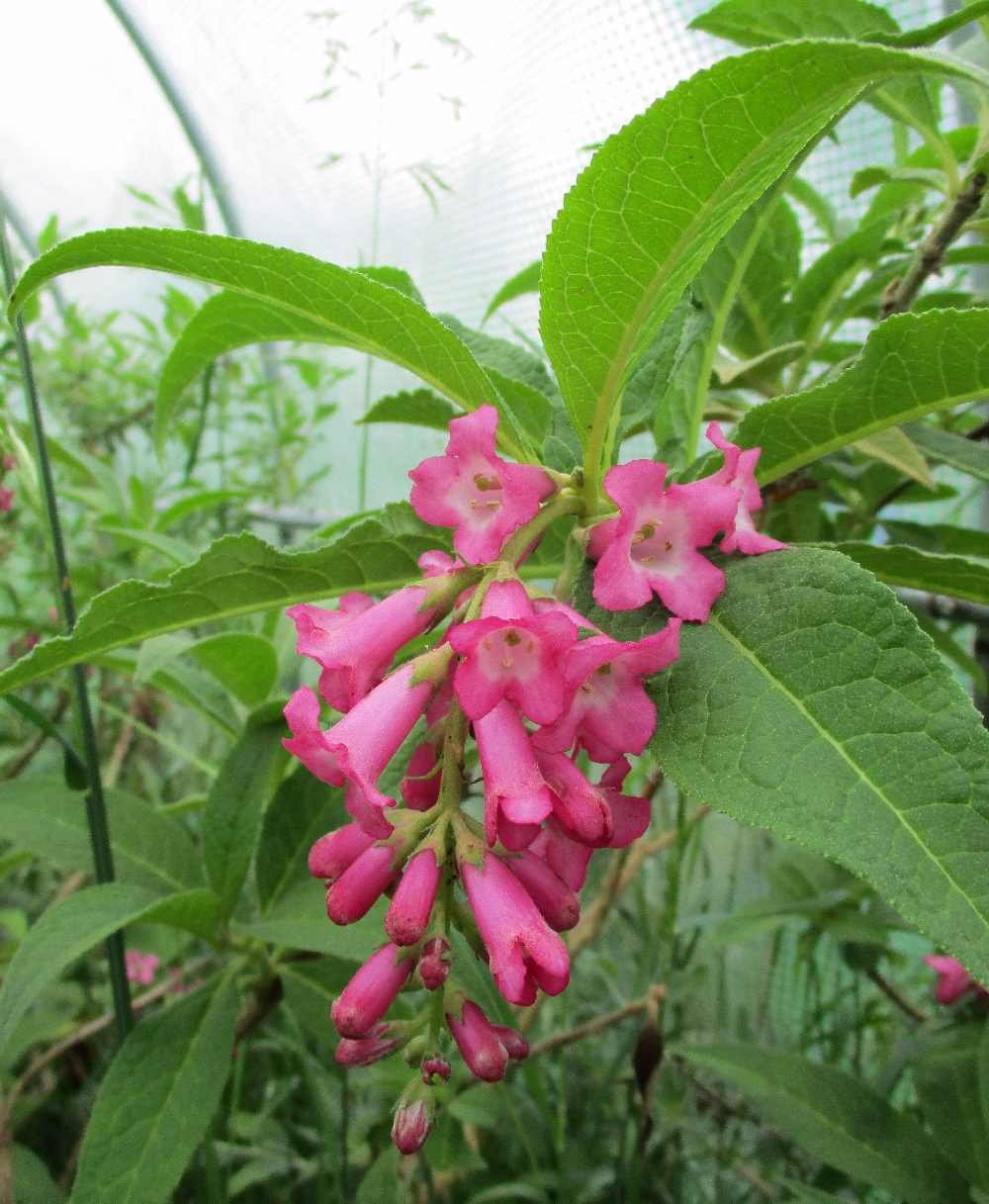Buddleja colvilei
Sponsor
Kindly sponsored by
The John Spedan Lewis Foundation

Credits
Andrew Large (2021)
Recommended citation
Large, A.T. (2021), 'Buddleja colvilei' from the website Trees and Shrubs Online (treesandshrubsonline.
Genus
Infraspecifics
Other taxa in genus
- Buddleja albiflora
- Buddleja alternifolia
- Buddleja araucana
- Buddleja asiatica
- Buddleja auriculata
- Buddleja caryopteridifolia
- Buddleja cordata
- Buddleja crispa
- Buddleja crispa × lindleyana
- Buddleja curviflora
- Buddleja davidii
- Buddleja delavayi
- Buddleja fallowiana
- Buddleja fallowiana × davidii
- Buddleja FLUTTERBY™ Series
- Buddleja forrestii
- Buddleja globosa
- Buddleja glomerata
- Buddleja japonica
- Buddleja lindleyana
- Buddleja LO AND BEHOLD® Series
- Buddleja longiflora
- Buddleja loricata
- Buddleja × luteolufaucia
- Buddleja macrostachya
- Buddleja marrubiifolia
- Buddleja megalocephala
- Buddleja 'Miss Ruby'
- Buddleja 'Morning Mist'
- Buddleja myriantha
- Buddleja New Dwarf Hybrids
- Buddleja nivea
- Buddleja officinalis
- Buddleja 'Orange Sceptre'
- Buddleja paniculata
- Buddleja × pikei
- Buddleja 'Pink Delight'
- Buddleja saligna
- Buddleja 'Salmon Spheres'
- Buddleja salviifolia
- Buddleja 'Silver Frost'
- Buddleja speciosissima
- Buddleja 'Summer Beauty'
- Buddleja virgata
- Buddleja × wardii
- Buddleja × weyeriana
- Buddleja × weyeriana Hybrids
- Buddleja 'Winter Sun'
Shrub or small tree, 2–6 m, with a bushy habit. Branchlets subquadrangular to subterete, stellate-tomentose with scattered stellate or glandular hairs, later glabrescent. Leaves opposite, sessile or with petiole up to 10 mm and with similar indumentum as branchlets; leaf blade narrowly elliptic to subelliptic, 3–5 times as long as wide, covered with stellate and scattered glandular hairs when young, base rounded, apex acuminate. Inflorescences are terminal cymes, up to 25 × 10 cm. Calyx campanulate, externally stellate tomentose with glandular hairs. Corolla pink, dark pink or wine red, 1.5–2.5 cm in diameter; corolla tube approximately cylindrical, 5–8 mm in diameter, throat up to 9 mm in diameter; outer surface with some stellate and glandular hairs but soon glabrescent, inside pilose at throat. Stamens inserted 2–6 mm below the mouth; anthers oblong, 2.5–5 mm. Ovary ovoid, 5–8 mm, stellate-tomentose. Style long, thick, glabrous or basally stellate-tomentose; stigma capitate. Capsules ellipsoid, 1–1.6 × 0.6–0.8 cm, glabrous or stellate-tomentose. Seeds oblong and unwinged, 1–1.5 mm long. (Leeuwenberg 1979; Li & Leeuwenberg 1996).
Distribution Bhutan China South Xizang, Yunnan India Assam, Sikkim Nepal
Habitat Open forest, thickets, open areas in mountains at altitude 1600–4200 m asl.
USDA Hardiness Zone 7-9
RHS Hardiness Rating H4
Conservation status Not evaluated (NE)
Taxonomic note Buddleja sessilifolia B.S. Sun ex S.Y. Pao is sometimes cited as a synonym (e.g. Li & Leeuwenberg 1996), but its application to B. colvilei is doubtful. It may represent either a separate species or a form of B. forrestii.
Joseph Hooker, who discovered this species in Sikkim in 1849 and who later described it in 1855, considered it to be ‘…the handsomest of all Himalayan shrubs’ (Stuart 2006). Its name commemorates Sir James Colvile (1810–80), a judge in Calcutta at the time of Hooker’s Indian journey, and who assisted his travels by providing a palanquin in which the botanist was carried for part of the journey (O’Brien 2018). It grows at altitude along the southern Himalayas, in forest clearings or open ground where it flowers at the start of the summer rainy season. The China Biodiversity Red List evaluates B. colvilei as vulnerable (Ge et al. 2018), although elsewhere it has not been evaluated.
Over time B. colvilei can reach the proportions of a small tree. It has by far the largest flowers of the genus and is immediately recognisable from any other Buddleja. Small flowered specimens may, perhaps, be confused with a large flowered B. forrestii, while the putative species B.sessilifolia has been shown be distinct from B. colvilei (Ge et al. 2018) despite its placement as a synonym of B. colvilei in the Flora of China (Li & Leeuwenberg 1996); the current author believes B. sessilifolia is best considered a form of B. forrestii.
B. colvilei flowers are borne in large pendulous panicles and can be various shades of pink through to wine-red, often with a white or less often golden-yellow throat. The flowers open from late spring to early summer (May-June in the UK). Plants are somewhat tender when young, but steadily become hardier with age. Even so, a sheltered position, such as against a south-facing wall is usually advised; exposed plants are more liable to have buds damaged by hard frosts and hence are less likely to flower well. A plant at Benmore Botanic Garden, Argyll, Scotland, is remarkable for having survived for many years on the wet, exposed Bhutanese Hillside area, although it is never prolific in flower (T. Christian pers. comm. 2021). B. colvilei is semi-deciduous; more leaves will be kept in mild winters, and completely lost where temperatures are very low for a prolonged period, or in colder regions. As with many Himalayan Buddleja, most soil types are tolerated except those which are water-logged, which encourages the rotting-off of the roots over winter, and extremely dry soils. Full sun for at least part of the day is required for vigorous growth. If pruning is required to reduce the size of the plant, then this should be carried out immediately after flowering in the early summer; any earlier and the flowers will be lost, any later and the shrub may fail to regenerate adequately to flower the following spring.
Buddleja colvilei has been collected on numerous occasions, with many introductions dating back to the 19th and early 20th centuries; it first flowered in the garden of W.E. Gumbleton, Co. Cork, in 1892, and still thrives in the mild conditions found in many Irish gardens. There are numerous specimens growing in collections and in gardens whose origins have been lost or were unrecorded. The early introductions have been supplemented by recent collections from expeditions to Bhutan and India: for example, Stuart (2006) mentions a collection made by Roy Lancaster in Bhutan in 1991 under L 1938. Recognised named cultivars include ‘Kewensis’ and ‘Howth Castle’, described below.
'Howth Variety'
Synonyms / alternative names
Buddleja colvilei 'Howth Castle'
Named after Howth Castle in Co. Dublin, Ireland, where it grew, and marketed at one time by Watson’s Nursery of Killiney, Dublin. The flowers of this cultivar are reported to be a richer, deep wine colour and larger than the type (Nelson 2000).
'Kewensis'
RHS Hardiness Rating: H5
Buddleja colvilei ‘Kewensis’ shares most features with the species in its typical form, but it is a slightly more restrained plant than average. The flowers are a superior dark wine-red, generally lacking a conspicuous white throat. It was propagated from a plant that once grew at Royal Botanic Gardens, Kew, although the geographical origin of the original specimen is unknown. ‘Kewensis’ is considered slightly hardier than most seed-raised forms of the species, being the most hardy of those grown at Highdown, Sussex (Stuart 2006). Even so, it is best grown in free-draining soil in a sheltered position, protected from the coldest winds.




